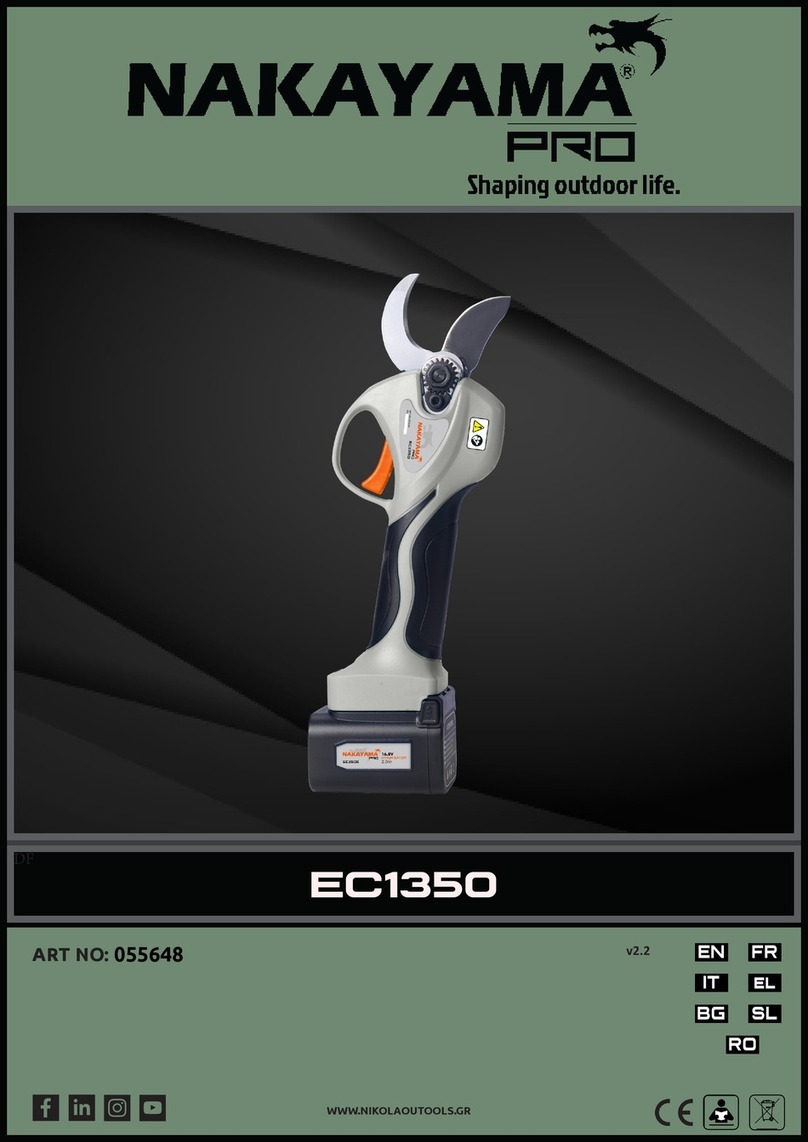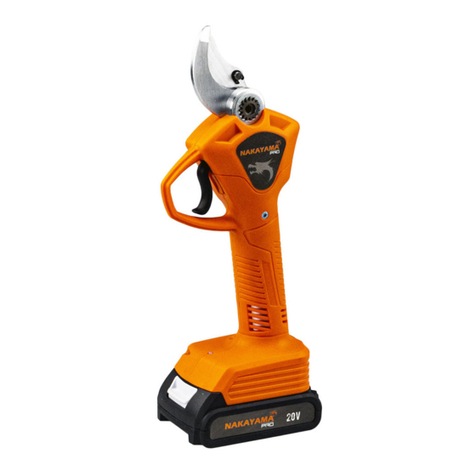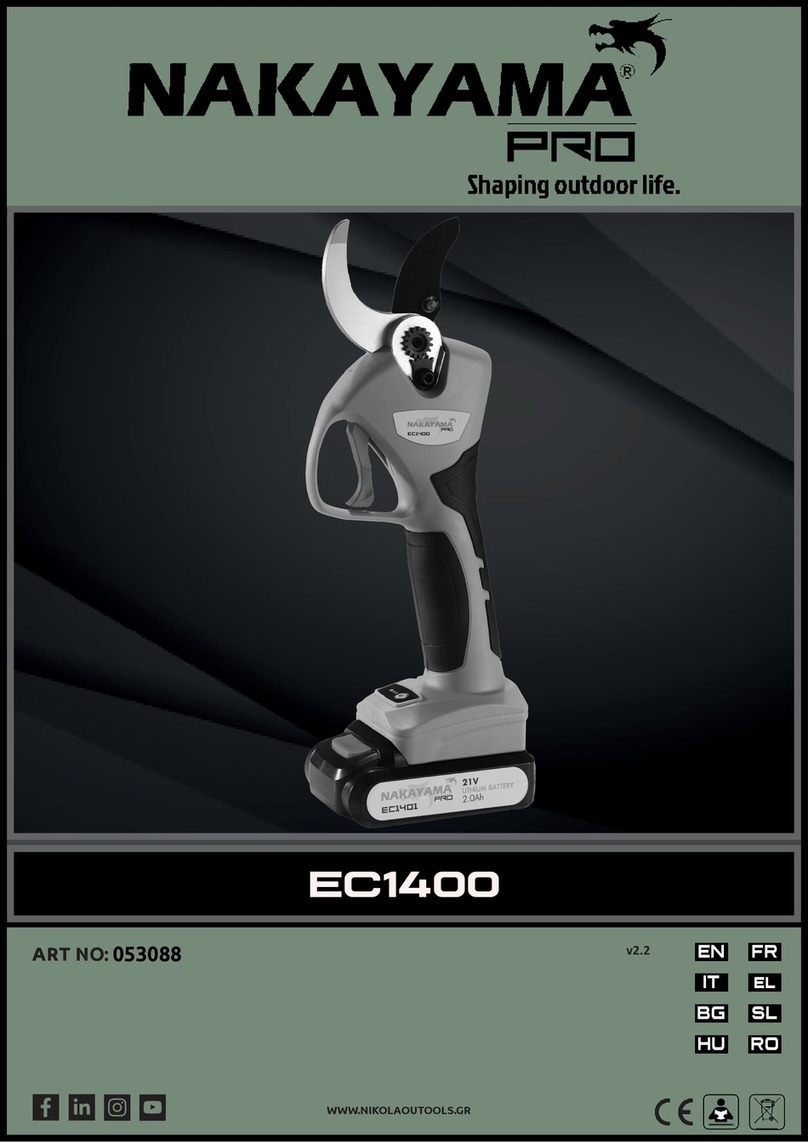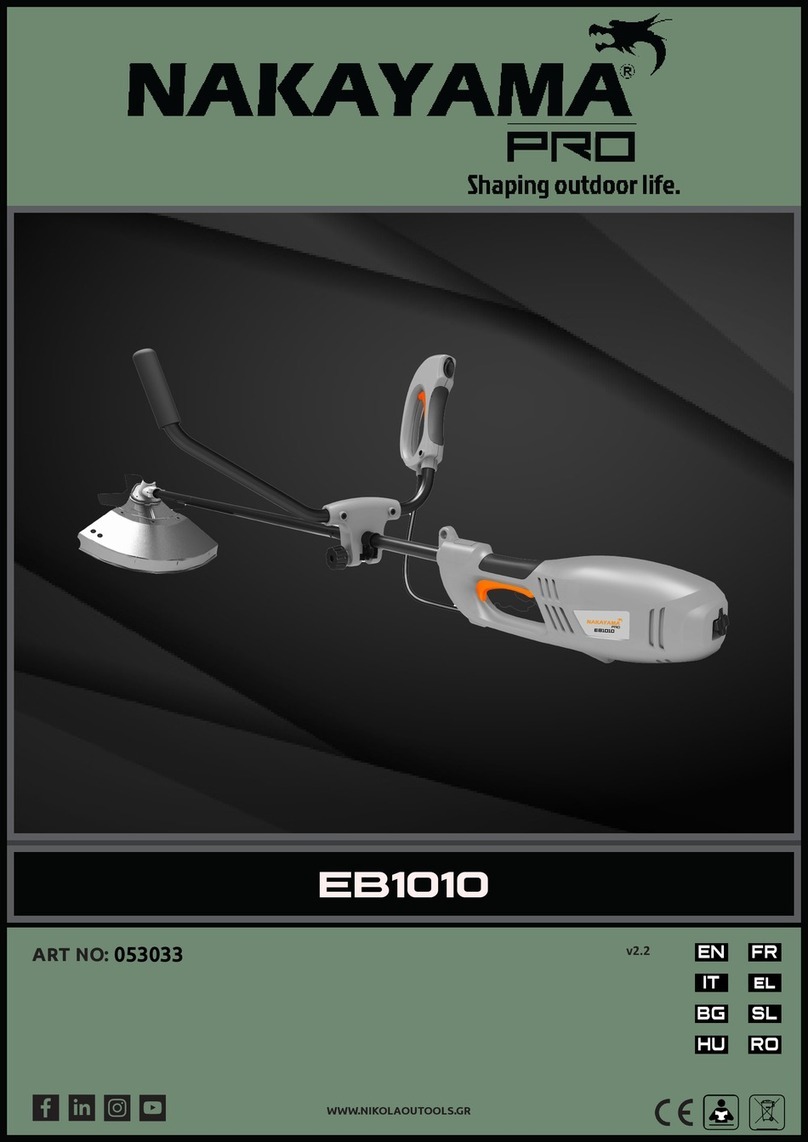
10
The term"electric tool” used in the safety
instructions, refers to corded electric tools (with
AC power cable), and battery-powered electric
tools (without power cable).
5.1 Safety at the workplace
a) Keep your work area clean and well
illuminated. Disorder and non-illuminated areas
can lead to accidents.
b) Do not work with the power tool in a
potentially explosive atmosphere, in which
there are inammable liquids, gases or dust.
Power tools create sparks, which could ignite
dust or vapours.
c) Keep children and other persons away while
using the power tool. If you are distracted, you
could lose control of the device.
5.2 Electrical safety
a) The connector of the power tool must t
into the socket. The plug must not be changed
in any way. Do not use any adapter plug
together with power tools that are grounded
for protection. Unchanged power plugs and
matching sockets reduce the risk of electric
shock.
b) Avoid body contact with grounded
surfaces such as pipes, heaters, stoves and
refrigerators. There is an increased risk of
electric shock if your body is grounded.
c) Keep the appliance away from rain or wet
conditions. The penetration of water into an
electrical device increases the risk of electrical
shock.
d) Do not use the cable for purposes not
intended, for carrying, hanging the power
tool, or for pulling out the plug from the AC-
wall outlet. Hold the cable away from heat, oil,
sharp edges or movable parts of the device.
Damaged or entangled cords increases the risk of
electric shock.
e) If you work with a power tool outdoors,
please use only extension cords, which are
also suitable for outdoor use. The application
of an extension cable for outdoor use reduces the
risk of electrical shock.
f) If the operation of the electric tool cannot
be avoided in a moist environment, please use
a fault-current circuit breaker. Using a fault-
current circuit breaker reduces the risk of an
electrical shock.
5.3 Safety of Persons
a) Be alert, watch what you do and be sensible
when you work with a power tool. Do not
use power tools if you are tired or under the
inuence of drugs, alcohol or medications. A
moment of carelessness while using the power
tool can result in serious injury.
b) Always wear personal protective equipment
and safety goggles. Wearing personal protective
equipment such as dust mask, non-slip safety
shoes, safety helmet or hearing protection,
depending on the type and use of the electric
tool, reduces the risk of injury.
c) Please avoid accidental start-up. Make sure
that the power tool is turned o, before you
connect it to the power supply and / or to the
battery, lift it up or carry it. If you have your
nger on the switch while carrying the power
tool or if the power tool is connected to the
power supply in switched-on condition, this can
lead to accidents.
d) Remove the adjustment tool or screw-
wrench before you switch on the power tool.
A tool or key, which is found in a rotating part of
the device, can lead to injuries.
e) Avoid abnormal body posture. Make sure
you stand securely and keep your balance at
all times. This allows you to control the power







































